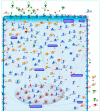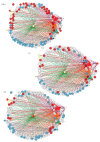Cracking the Code of Neuronal Cell Fate
- PMID: 37048129
- PMCID: PMC10093029
- DOI: 10.3390/cells12071057
Cracking the Code of Neuronal Cell Fate
Abstract
Transcriptional regulation is fundamental to most biological processes and reverse-engineering programs can be used to decipher the underlying programs. In this review, we describe how genomics is offering a systems biology-based perspective of the intricate and temporally coordinated transcriptional programs that control neuronal apoptosis and survival. In addition to providing a new standpoint in human pathology focused on the regulatory program, cracking the code of neuronal cell fate may offer innovative therapeutic approaches focused on downstream targets and regulatory networks. Similar to computers, where faults often arise from a software bug, neuronal fate may critically depend on its transcription program. Thus, cracking the code of neuronal life or death may help finding a patch for neurodegeneration and cancer.
Keywords: apoptosis; drug repurposing; drug targets; functional enrichment; neurological disease; neurotrophic factors; regulatory network; survival; transcriptional analysis.
Conflict of interest statement
The authors declare no conflict of interest.
Figures



References
Publication types
MeSH terms
LinkOut - more resources
Full Text Sources

